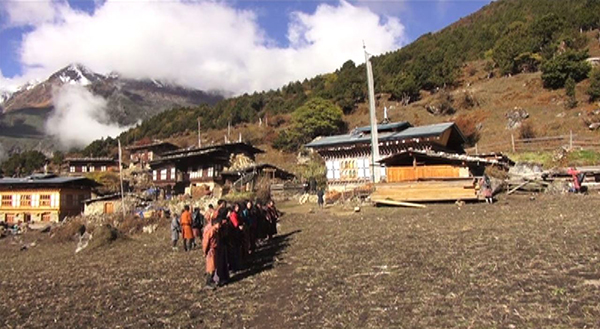 Scientists across the world say the rising temperature on land and sea are increasingly forcing species to cooler climes and pushing disease-carrying insects to new areas. The statement becomes more obvious in Bhutan as people in Wachey under Lunana, one of the coldest places in the country spots mosquitoes for three years in a row.
Scientists across the world say the rising temperature on land and sea are increasingly forcing species to cooler climes and pushing disease-carrying insects to new areas. The statement becomes more obvious in Bhutan as people in Wachey under Lunana, one of the coldest places in the country spots mosquitoes for three years in a row.
At an elevation of almost 4,000 meters above sea level, Wachey under Lunana Gewog in Gasa saw mosquitoes for the last three summers.
“Until 2018, we didn’t see any mosquitoes in our village. But in the past few years, we have been seeing mosquitoes in our place. I think it is because the temperature is rising. We are seeing mosquitoes along the rivers,” said Phub Dorji, the Tshogpa of Wachey under Lunana.
Public health experts say that the optimum temperature for mosquitoes to survive is 10 degree celsius.
“There are many other mosquitoes that are prevailing in higher altitudes, having a low temperature. The minimum temperature to survive in higher altitude is actually 10 degree celsius,” said Rixin Jamtsho, the Chief Program Officer for Department of Public Health under MoH.
Mosquito surveillance conducted a few years ago by the Health Ministry show that mosquitoes are prevalent in Damji in Gasa which is around 2,300 meters above sea level.
“It all depends on temperature and rainfall. If there is more rainfall, then there are more breeding places. In the case of rising temperature, they are getting optimum temperature for breeding. I think all these disease-transmitting mosquitoes can go there, breed and has a public health impact,” he added.
Experts say of the estimated 4,000 species of plants and animals around the world, more than half are moving to higher altitudes.
“Plants and animals, for its existence or its survival need a favourable kind of conditions. And when this favourable condition is compromised changes triggered by climate change, they start to face certain kind of difficulties. Their environment becomes hostile. Not just animal species but plant species also, it will have to be in line to how the external environment changes. So the mosquitoes shifting upward or the range starts shifting towards higher elevation or toward the colder area because that colder area is starting to become warm,” said Kinley Dorji, a Lecturer with the Department of Environmental Management at the Royal Thimphu College.
Along with the risk of emergence of diseases in new places, it can also lead to the extinction of some species. It can affect food production as well. With much of high altitude areas in Bhutan still unexplored for mosquito prevalence, nothing much can be said at the moment.
Sangay Chezom








